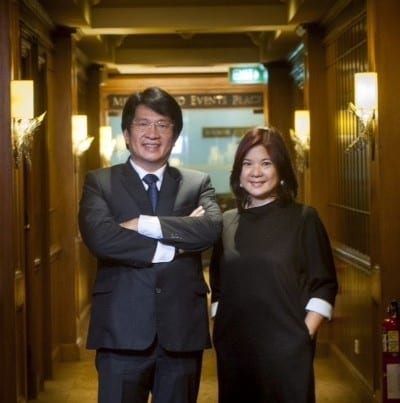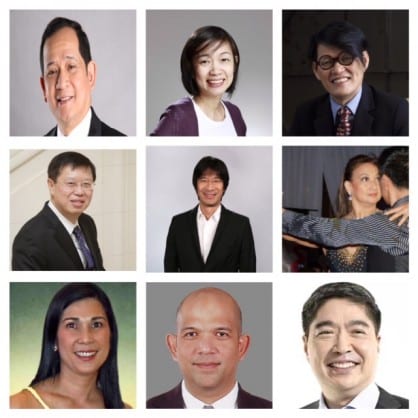
Last year, we put together a list of trends which was really borne out of personal reflections, based on past experiences on how things tended to progress or divert into other patterns of change. This year, besides our own observations, we have put together another such list, this time combining our own forecasts as well information shared by some Mansmith Young Market Masters Awardees and friends from TNS-Kantar who gave their insights on what 2015 will look like for various industries.
Stability of the Middle Class
- Launch of new categories – As the economy improves and income rises or stabilizes, expect consumers to be more open to trying new ideas and newer categories, including existing categories with lesser market penetration (cereals, yogurts, mouthwash, insurance, water purifiers, smartphones).
- Emergence of the economy premium (Econoprem) segment – While masstige is prestige brand pricing downward, econoprem is economy brand pricing upward. With benefit plus and aspirational packaging as key features, the fast growth among those in the middle class will see a willingness to buy at pricing slightly higher than economy brands but more affordable than imported brands. In the beverage category alone, one can see Red Oak sangria, Excellente brandy, Don Papa rum and Manille liqueur as examples.
- Cheaper smartphones – Within a “red ocean” competitive environment, low priced smartphones will create abundant alternatives to source information and entertainment, leading to a more informed and connected population.
- More investments and luxury purchases from unmarried (single) yuppies – Increase in disposable income plus easier access to opportunities such as travel and education will lead to many young Filipinos postponing marriage and/or having kids to their late 20s or 30s. This may also mean that these young people may choose to invest more in stocks and insurance or buy branded premium items as they have higher disposable income considering that they continue to live with their parents and thus, have lesser personal overhead expenses.
Convergence of 3T’s (Traffic, Technology and Time)
- Shift to small store formats – Traffic will lead to smaller store formats (community stores, mini-marts, convenience stores) for greater buying convenience.
- All-in-One – To save time traveling, convenience stores selling food will become a fast food substitute. They will also threaten other categories as they are becoming one-stop convenience shops for almost everything else.
- Tech-solutions – People will become less tolerant to wait in line after enduring traffic on the road, thus, leading to more tech-based solutions (transportation, shopping, entertainment) to help manage personal and work life necessities and increase own discretionary time.
- Even loyalty cards will be made obsolete as customers will prefer the convenience of everything on their smartphones, addressing the irritant of carrying too many loyalty cards in one’s wallet to be able to avail of benefits. This mobile solution will not just improve customer experience and convenience but can also be used for targeted promotions for greater relevance and impact for the brand.
Primacy of Self and Wellness
- The Urban Outdoor – More people are dressing up in fashionable, outdoor inspired looks.
- Cycling is the new Golf – More runners are becoming cyclists, and cycling is the rave among executives resulting in the phenomenon known as ‘MAMILS’ or ‘middle age men in Lycra (tight fit jerseys and shorts). Toby’s group has in fact opened Trek Bicycle Store, the first cycling lifestyle store last December to take advantage of this. Furthermore, triathlon is also booming. There is a record number of new triathlon events in 2015 in response to more people challenging themselves to attain their personal best.
- Natural and slow food for better health and wellness – Together with the stability of the middle class who can now afford to choose healthier lifestyles and food, we will find a rise in the number of farm-to-table restaurants and stores offering organic and alternative choices to fast food.
Alteration of Go-To-Market
- Go-to-market – Business models will keep changing. In the pharma industry, med rep cold calling visits in hospitals or massive sending doctors abroad to drive prescriptions will no longer be the norm, due to both regulatory issues and ROI on such activities.
- Digital as an Entire Value Chain – Digital (online, mobile) will continue to rise against traditional media, not just because of rising smartphone ownership but also because of real time interaction and feedback. However, it won’t be treated a mere tactic but as an ecosystem where the consumer journey (search, buy, service) will be taken into consideration.
- Internal branding – HR will play a greater role in internal marketing. No longer will they be expected to do the usual recruitment and benefit management alone but those strategic thinking HR will be Chief Execution Officers or becoming the 2nd CEO no less, empowering others to get their job done and at the same time showing their own ability to get the company’s and brand DNA’s interpreted internally.
- Bloggers as Influencers – Top bloggers will continue to have more significant roles to play other than merely online blogging. Together with mainstream media personalities, they will also become major endorsers and brand ambassadors and will cross over to other media, becoming a key factor for success for making brands succeed. Examples include bloggers featured in a Preview magazine cover, and Unilever bloggers as brand ambassadors.
Socialization in a Digital World
- Rise in membership of clubs and associations- The internet and smartphone will make people want to find another channel to connect in a more personal level. Organizations that have exploited this are Anvil Business Club among the Filipino-Chinese and White Space Club among entrepreneurs and marketers where people get together to interact and exchange ideas personally and build networks outside Facebook and Twitter.
- Click and collect – Instead of click and deliver, you can expect more consumers reserve or order online then pick up and/or try instore to interact with other people.
- Authenticity – Brand advocacy will become a minimum requirement. As consumers become more well informed, they will be able to spot the difference between honest purpose and mere activities to glorify brands, the former treated as a friend, the latter a foe.
Ascendancy of Entrepreneurs
- Entrepreneurs as Rock Stars – Successful entrepreneurs who are creative, thrive in uncertainty and are practical problem solvers will be hero-worshipped by the young. With personal freedom as a big come-on, many younger people will be inspired to be entrepreneurs to make a difference in society, even at the expense of finishing their college education.
- Emergence of Entrepreneurial Apps – With rise of business apps, housewives can become hoteliers or home restaurant chefs, a brother can be in car rental business, a cousin in the neighborhood messengerial services – where services can be offered online to time-constrained individuals needing someone else to run an errand for them including walking the dog.
There are many more matters that will continue to evolve in 2015 and will definitely affect the economy including social issues in migration, religion, education, gender roles, climate change and disaster preparedness, among others, not to mention the ASEAN integration this year and political movements toward the 2016 presidential elections. The short list above is our top of mind that uses a marketing and business perspective and we are sure that a watchful eye on constant changes in consumer behavior and consumption will bring forth just as many opportunities as well as counter-trends.



2 thoughts on “20 Marketing Trends and Predictions for 2015 by Josiah Go & Chiqui Escareal-Go”